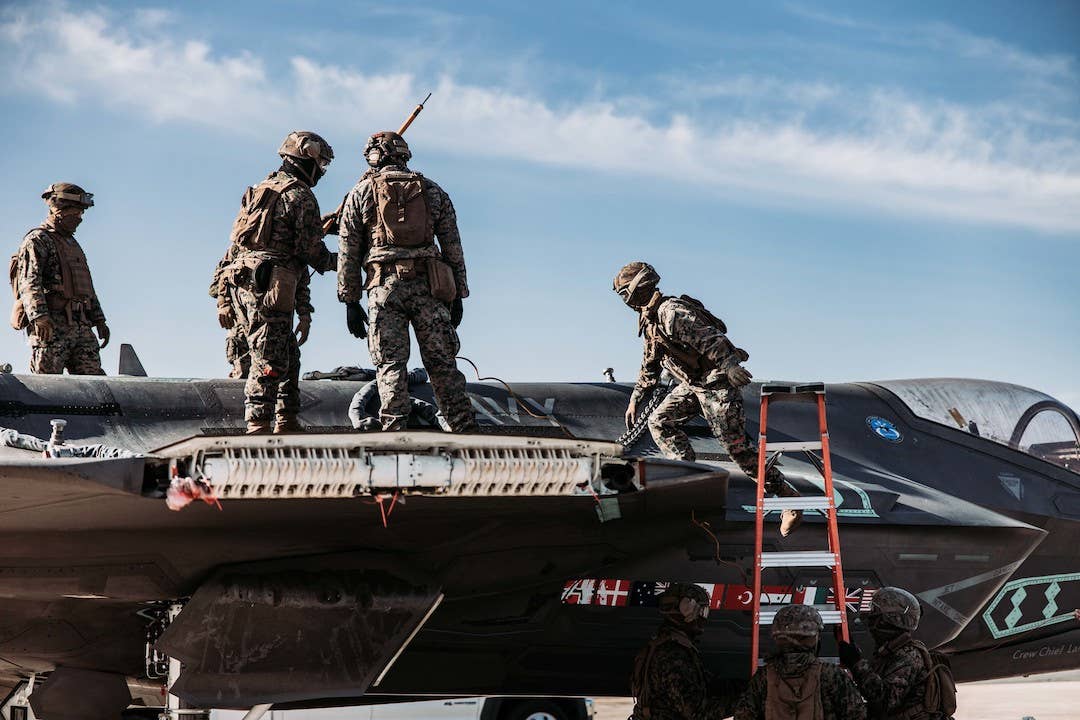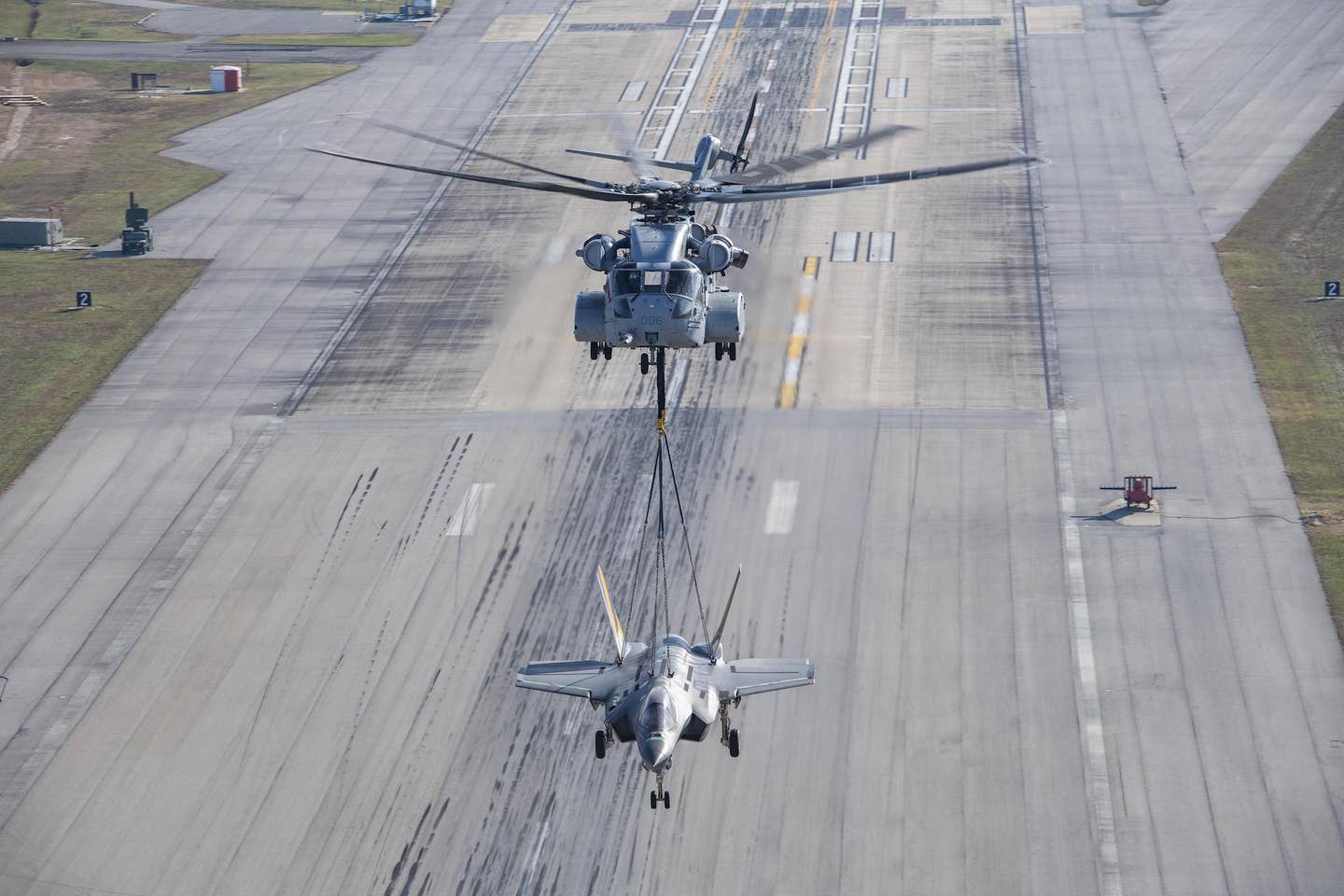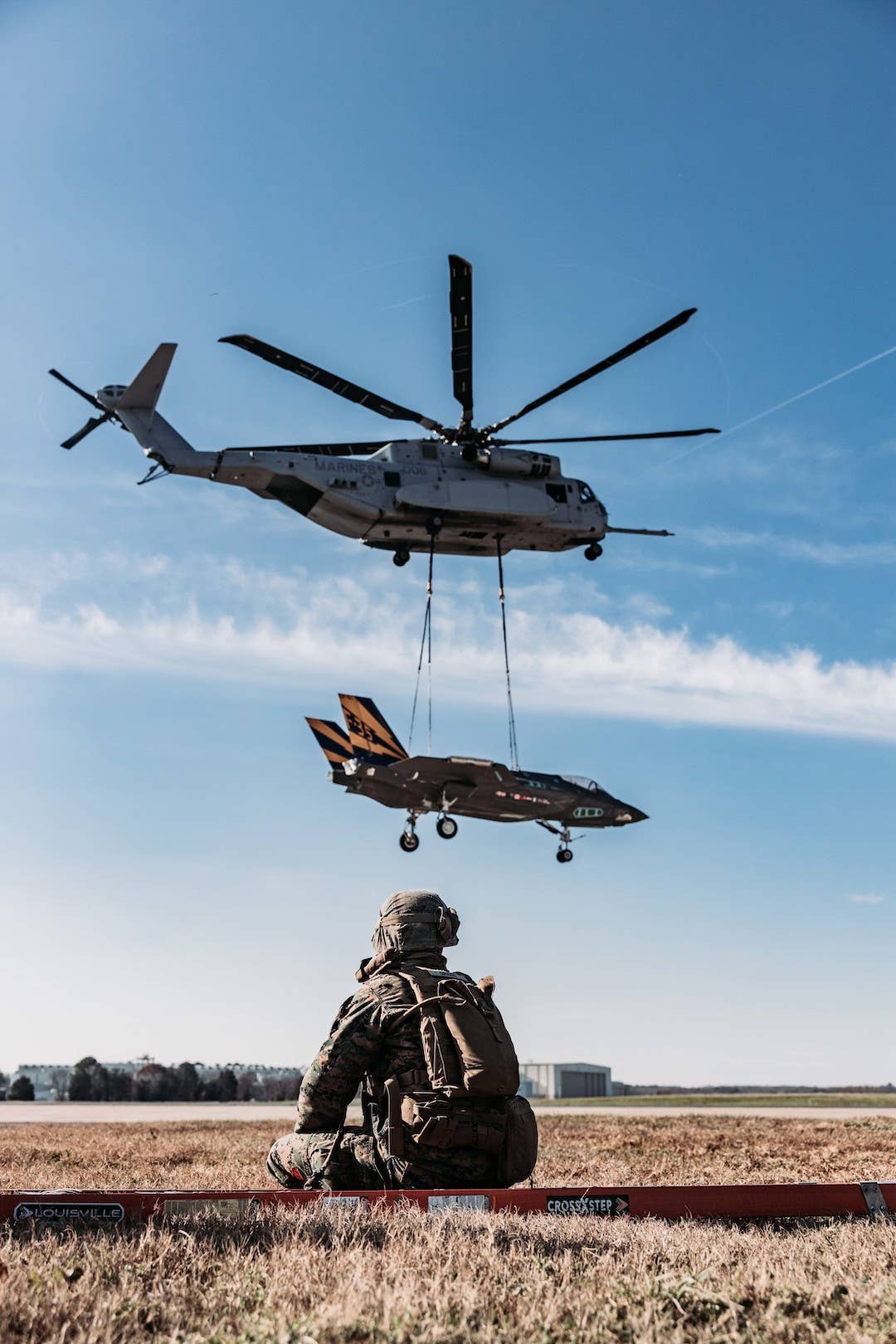A CH-53K King Stallion heavy lift helicopter from Marine Operational Test and Evaluation Squadron (VMX) successfully lifted a US Navy F-35 Lightning II airframe on December 13, 2022.
The exercise was carried out at Naval Air Station Patuxent River, Maryland. The announcement was made on January 24 by the US Naval Air Systems Command (NAVAIR). The US military has also released the images and a video of the exercise.
The lifted aircraft was an F-35C carrier development test variant that had flown 450 test flights between 2010 and 2016, totaling 750 flight hours.
“The F-35C and rigging weighed about 22,000 pounds after removal of its mission and propulsion systems, outer wings, and additional equipment,” the statement said.
The “external load certification lift” of an inoperable F-35C, according to the press release, was designed to assess the “load and inform future [CH-53K] lift capabilities.” The NAVAIR Cargo Lab and the NAS Patuxent River F-35 Integrated Test Force (ITF) test crew also contributed to the lift’s success.
In the photos, Marines of CLB-24 can be seen rigging and chaining the F-35C CF-01 in preparation for shipment. The CH-53K then hooks the F-35C to it before raising the jet into the air.

The lift was carried out following a careful examination process. Before the lift was performed, several tests and reports were completed, including documenting cargo characteristics, sling configuration analysis, and load certification testing.
Additionally, an earlier crane test lift confirmed the conditions of the control surface, the jet’s sling, rig, pitch, and bank. Nevertheless, this appears to be the first time an F-35 fighter of any kind has been lifted by the CH-53K helicopter.
The exercise, which aimed to help develop tactics, methods, and procedures (TTP) for CH-53K King Stallion “Helicopter Support Team operations,” was carried out with the assistance of Marines from Combat Logistics Battalion 24 (CLB-24).
Compared to its predecessor, the CH-53E, the CH-53K is currently approved to execute a 27,000-pound external lift and is anticipated to be approved for a 36,000-pound external lift.
The new images serve as yet another illustration of the CH-53 K’s capability for heavy lifting.
CH-53K King Stallion Helicopter
The CH-53K program was chosen to replace the Marine Corps’ aging fleet of CH-53E Super Stallion helicopters manufactured by Sikorsky, which entered service in 1981.
The first CH-53K was delivered to the US Marine Corps (USMC) in May 2018, and the service declared the first CH-53K operational in April 2022. The Navy stated in December 2022 that Sikorsky had received approval to begin full-rate helicopter production.
The USMC intends to buy 200 CH-53Ks in total, according to Naval Air Systems Command (NAVAIR). The new CH-53K can carry a payload of 35,000 lbs (15,900 kilograms). It uses three powerful GE T408 engines and performs better than the CH-53E by carrying almost twice as much external payload over a 110-mile radius (204 kilometers).

Sikorsky says that it will be able to build up to two units per month at its peak, or 24 units annually, to meet the service’s requirement for a replacement for the CH-53E Super Stallion.
Sikorsky, now owned by Lockheed Martin, is purchasing long-lead components and critical supplies to enable full-rate production of the CH-53K helicopter at its Stratford, Connecticut, site.
The King Stallion’s three engines have been upgraded to 7,500 pounds of shaft horsepower each. The rotor blades are an enhanced composite material that improves high-temperature and high-altitude performance. The cabin and cargo room are also larger than in earlier iterations of the CH-53.
The helicopter would be critical in transporting equipment from ship to land during an amphibious assault, one of the most challenging operations in combat.
Furthermore, the King Stallion will also be essential in the Marine Corps Force Design 2030 effort. The Force Design, the brainchild of Marine Corps Commandant General David H Berger, plans for scattered groups of Marines to move from island to island in a modernized version of the Corps’ World War II island-hopping campaign.

The idea is to develop stand-in troops, which are meant to be relatively small, extremely mobile, lethal units that operate within the enemy’s “weapons engagement zone,” especially in the Western Pacific, to counter the Chinese threat.
The delivery and introduction of additional heavy-lift CH-53K King Stallions would probably close some significant gaps and address the logistical issues in the plan to combat China’s Anti Area/Access Denial (A2/AD) bubble.
- Contact the author at ashishmichel(at)gmail.com
- Follow EurAsian Times on Google News




